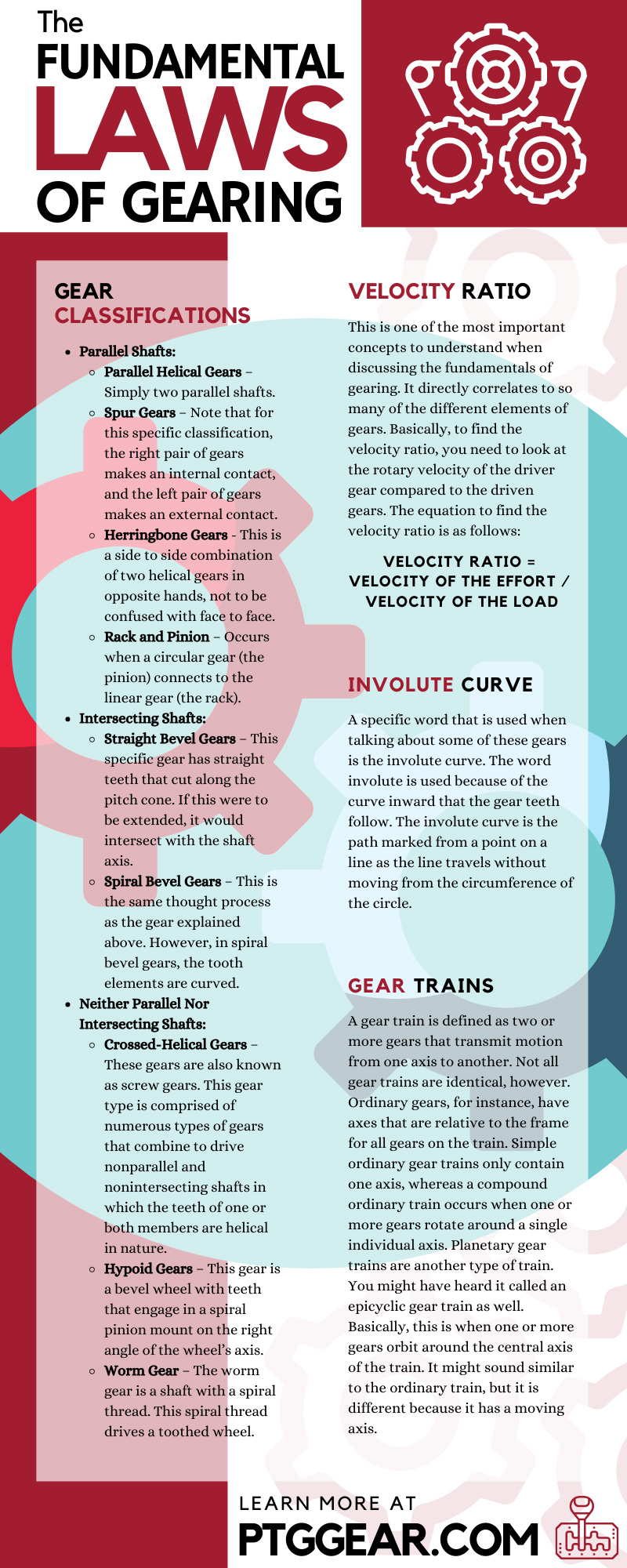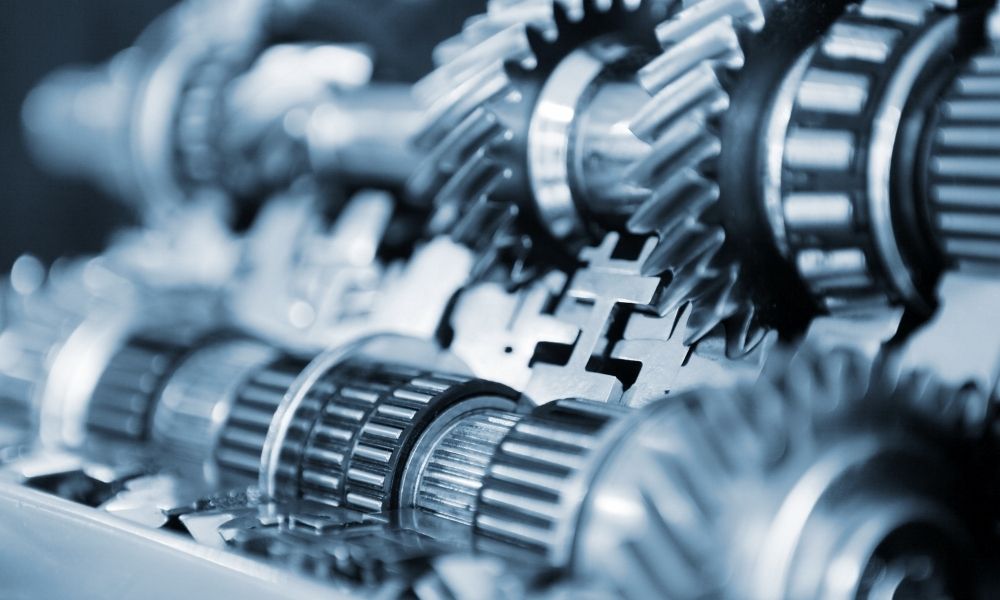The fundamental laws of gearing can be overwhelming and confusing, but they don’t have to be. For an inside look at this topic, continue reading the information below. We have provided you with not only the different classifications of gears but also a deeper explanation of what velocity ratio means and insight into the idea of the Involute Curve. In addition to that information, we have also provided you with an explanation of gear trains.
Don’t waste any time—start educating yourself on this topic today. The information provided below will be extremely helpful in establishing a basic foundation on this topic. Before you start, it’s beneficial to gather a general understanding of what a gear is. By basic definition, a gear is a machine element that transfers motion by means of successively engaging teeth.
Now that you have your starting point, let’s begin fine-tuning your knowledge and looking at the fundamental laws of gearing.
Gear Classifications
There are numerous different types of gears. Understanding these classifications will help you identify each type so you can use them properly. Not understanding the different options and types will only cause confusion. The classifications are designed according to the relative position of the axes of revolution. There are three different axes that are used: parallel, intersecting, and neither parallel nor intersecting.
- Parallel Shafts:
- Parallel Helical Gears – Simply two parallel shafts.
- Spur Gears – Note that for this specific classification, the right pair of gears makes an internal contact, and the left pair of gears makes an external contact.
- Herringbone Gears - This is a side to side combination of two helical gears in opposite hands, not to be confused with face to face.
- Rack and Pinion – Occurs when a circular gear (the pinion) connects to the linear gear (the rack).
- Intersecting Shafts:
- Straight Bevel Gears – This specific gear has straight teeth that cut along the pitch cone. If this were to be extended, it would intersect with the shaft axis.
- Spiral Bevel Gears – This is the same thought process as the gear explained above. However, in spiral bevel gears, the tooth elements are curved.
- Neither Parallel Nor Intersecting Shafts
- Crossed-Helical Gears – These gears are also known as screw gears. This gear type is comprised of numerous types of gears that combine to drive nonparallel and nonintersecting shafts in which the teeth of one or both members are helical in nature.
- Hypoid Gears – This gear is a bevel wheel with teeth that engage in a spiral pinion mount on the right angle of the wheel’s axis.
- Worm Gear – The worm gear is a shaft with a spiral thread. This spiral thread drives a toothed wheel.
Velocity Ratio
This is one of the most important concepts to understand when discussing the fundamentals of gearing. It directly correlates to so many of the different elements of gears. Basically, to find the velocity ratio, you need to look at the rotary velocity of the driver gear compared to the driven gears. The equation to find the velocity ratio is as follows:
Velocity Ratio = velocity of the effort / velocity of the load
Do not forget to make note of this. It is extremely important!
Involute Curve
The numerous gear types are made up of many different elements and aspects. A specific word that is used when talking about some of these gears is the involute curve. The word involute is used because of the curve inward that the gear teeth follow. The involute curve is the path marked from a point on a line as the line travels without moving from the circumference of the circle.
Below are a few notes to take into consideration regarding involute curves:
- The circle that you get the involute curve from is called the base circle.
- There is no involute curve within the base circle.
- Instantaneous Center (Instant Center) is defined as both:
- The point on one body where the other body rotates at the instant considered.
- The point where the bodies are relatively at rest.
- Instantaneous center is also known as the point of tangent, with the circle regarding the motion of the line.
Understanding the involute curve will only make it simpler to understand this topic, thereby making your life that much easier.
Gear Trains
To better understand the three different types of gear trains, it is important to first understand what a gear train is. A gear train is defined as two or more gears that transmit motion from one axis to another. Not all gear trains are identical, however. Ordinary gears, for instance, have axes that are relative to the frame for all gears on the train. Simple ordinary gear trains only contain one axis, whereas a compound ordinary train occurs when one or more gears rotate around a single individual axis.
Planetary gear trains are another type of train. You might have heard it called an epicyclic gear train as well. Basically, this is when one or more gears orbit around the central axis of the train. It might sound similar to the ordinary train, but it is different because it has a moving axis.
The information on the fundamental laws of gearing that has been outlined above has only scratched the surface. There is so much more that goes into this concept that we will cover at a later date. However, the information above should have provided you with a solid foundation to start understanding the general concept.
However, our professionals at Blaz-Man Gear Inc. – Power Transmission Group can provide you with even more insight and assistance on this topic. Our professionals are the best of the best! In addition to being able to provide you with assistance and knowledge, our company is also known for supplying unique gear supplies, as well as custom made gears. We can truly provide you with whatever you need. Our superior knowledge of all things gears comes directly from creating and customizing all your gear wants and needs in a high-quality way. If you need more knowledge or customized gear creation, reach out to us or visit our website today.

